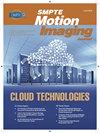用现代磁带存储提高信息技术的可持续性
Q3 Engineering
引用次数: 1
摘要
随着全球在应对COVID-19大流行方面取得重大进展和世界经济复苏,气候变化以及更广泛的环境、社会和治理(ESG)主题已成为全球企业面临的关键问题。考虑到信息技术(IT)行业的规模和对全球消费者的影响,没有哪个行业比IT行业更能体会到这一点。随着云计算、人工智能、大数据的发展和5G网络的扩展,信息技术(IT)行业正在迅速发生变化,产生了大量的信息。行业分析师估计,到2025年,创建、捕获或复制的数据量将从2018年的33 ZB增长到175 ZB。考虑到对可持续性的关注,以及在未来几年存储不断增长的数据所需的大量存储设备,组织有机会通过将不经常访问的(冷数据)从基于硬盘驱动器(HDD)的存储迁移到现代磁带存储来减少碳足迹,提高可持续性,并减少费用。行业分析师认为,存储在hdd上的60%-80%的数据是冷数据。考虑一个假设的例子,评估保存100 Pbyte信息10年的存储介质的影响。与仅使用HDD的解决方案相比,将60%的HDD驻留数据移动到磁带上的活动归档减少了58%的碳排放,减少了51%的电子废物(eWaste),并将总拥有成本(TCO)降低了46%。此外,如果所有数据都是冷的并传输到磁带上,则碳排放量减少97%,eWaste减少85%,TCO降低78%。在全球范围内,将60%的硬盘驻留数据转移到磁带上可以减少全球7900万吨的碳排放,为减少全球碳排放做出有意义的贡献。对于企业来说,经济效益非常显著,足以提高完全通过节省TCO来资助迁移项目的可能性,同时有助于减少全球碳排放和电子垃圾。本文章由计算机程序翻译,如有差异,请以英文原文为准。
Improving Information Technology Sustainability With Modern Tape Storage
As the world has made significant progress against the COVID-19 pandemic and world economies rebound, climate change and the broader subject of environmental, social, and governance (ESG) have become critical issues for companies worldwide. Nowhere is this experienced more than in the information technology (IT) industry, given its size and impact on consumers worldwide. The IT industry is rapidly changing with the evolution of cloud computing, artificial intelligence, big data, and the expansion of 5G networks resulting in the creation of massive quantities of information. Industry analysts estimate that the amount of data created, captured, or replicated will grow from 33 Zettabytes (ZB) in 2018 to 175 ZB by 2025. Given the focus on sustainability and the large volumes of storage devices required to store the growing quantities of data in the coming years, organizations have an opportunity to reduce their carbon footprint, improve sustainability, and reduce expenses by migrating less frequently accessed (cold data) from hard disk drive (HDD)-based storage to modern tape storage. Industry analysts believe that 60%–80% of the data stored on HDDs is cold data. Consider a hypothetical example of assessing just the impact of the storage media of keeping 100 Pbyte of information for 10 years. Compared to an HDD-only solution, an active archive that moved 60% of the HDD resident data to tape reduced carbon emissions by 58%, reduced electronic waste (eWaste) by 51%, and reduced the total cost of ownership (TCO) by 46%. In addition, if all the data is cold and is transferred to tape, carbon emissions are reduced by 97%, eWaste is decreased by 85%, and TCO is lowered by 78%. Globally, moving 60% of the HDD resident data to tape could reduce global carbon emissions by 79 million tons, making a meaningful contribution to reducing global carbon emissions. For enterprises, the financial benefits are significant enough to raise the possibility of funding the migration project entirely by the TCO savings while helping reduce global carbon emissions and eWaste.
求助全文
通过发布文献求助,成功后即可免费获取论文全文。
去求助
来源期刊

SMPTE Motion Imaging Journal
工程技术-成像科学与照相技术
CiteScore
0.60
自引率
0.00%
发文量
0
审稿时长
>12 weeks
期刊介绍:
The SMPTE Motion Imaging Journal is the key publication of the Society, consistently ranked by our members as the most valuable benefit of their SMPTE membership. Each issue of the Journal explores a theme in great depth, with peer-reviewed technical articles from leading academics, researchers and engineers working at the top companies worldwide.
You''ll expand your knowledge on topics like image processing, display technologies, audio, compression, standards, digital cinema, distribution and machine learning and much more. For additional coverage of each month''s topic, the Journal features more exclusive articles online.
 求助内容:
求助内容: 应助结果提醒方式:
应助结果提醒方式:


